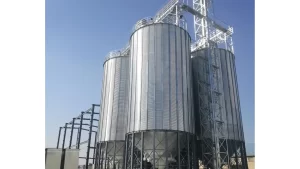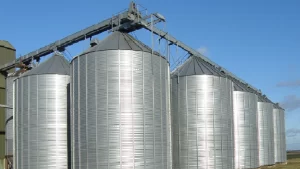Grain farming is an intricate line of work that involves more than planting and waiting for the harvest. Grain farming is a year-round task with important jobs to complete during each season. Many people think the farming process comes to a halt in the winter, but many farmers spend this time planning and preparing for next year’s season. Grain farming is a delicate, intricate process that requires hard work, precise planning, and an understanding of the entire cycle. From planting seeds to harvesting the crops, and from managing the grain storage to preparing for the next season, it’s a year-round process. One company that understands the nuances of grain farming is Prairies Partners Global Solution. With expertise in agricultural solutions, they help farmers optimize their grain farming processes, ensuring sustainability, profitability, and efficiency.
Also Read Us: Top 5 Silo Storage Tank Manufacturer
Essential steps in the grain farming process
Step 1: Preparing the Field for Planting
The first step in any successful grain farming season is proper field preparation. This involves analyzing soil health, choosing the right crop variety, and optimizing planting methods. Farmers must assess the soil’s pH, texture, and nutrient levels, as these factors influence crop yields. For instance, crops like wheat, corn, and barley require different conditions, and selecting the correct one for each field is crucial.
Step 2: Choose the Types of Grains You’ll Grow
It could even affect the types of crops you can successfully grow the following season. The most common types of grains, also known as cereals, fall into two categories: true cereal grains and pseudocereal grains. You can identify true cereal grains by their grassy appearance.
Step 3: Planting the Seeds
This task requires precision to ensure the seeds are placed at the optimal depth, with the correct spacing. Farmers often use specialized equipment for planting, which helps to manage the seeding rate and ensure uniform germination. choose the type of grain you wish to grow based on what will thrive in your location. Seek to acquire your seeds from a reputable supplier who has tested the seeds for diseases, weeds and germination. Different grains have some slightly different preparation processes,
Step 4: Managing the Crop During Growth
Crop management is essential to ensuring that plants thrive and reach maturity. During the growing season, farmers monitor crop health, manage pests, and ensure that crops receive enough water and nutrients. Irrigation systems, pest control, and regular inspections help ensure optimal crop growth.
Step 5: Harvesting the Grain
Harvesting is one of the most critical stages in the grain farming process. Once crops have matured, farmers need to harvest them at the right time to ensure maximum yield and quality.
Here are the steps you’ll take to harvest your grain:
- Harvest the grain from the field: Use a sickle, scythe or pruners to harvest your grain. Larger farms may choose to use larger machinery to speed up this process.
- Thresh the grain: This is the act of removing the grain from its casing, or chaff, by rubbing it by hand or using a machine called a thresher. You could also flail the grain with a wooden bar or tread it with your feet to thresh the grain.
- Winnow the grain: This is the act of separating the edible grain from the inedible chaff.
Step 6: Storing the Grain
Once harvested, the grain must be properly stored to maintain its quality until it’s ready for sale or use. Grain storage is a delicate process that requires careful monitoring of temperature, humidity, and airflow. If grain is stored improperly, it can spoil or lose its quality, leading to financial loss.
With Prairies Partners Global Solution’s support, farmers can access modern grain storage solutions that ensure optimal conditions for long-term storage. Their systems offer real-time monitoring and automation, making it easier for farmers to manage the conditions of the bins and ensure that the grain stays in top condition.
Step 7: Planning for Next Year’s Season
The final step in the grain farming process involves planning for the next season. Every successful harvest begins and ends with planning and goal setting. Once your grain is in storage, there is plenty to plan for regarding the upcoming season. You’ll also have time to reflect on your goals. This includes evaluating the success of the previous season, making adjustments to farming practices, and ensuring that financial and logistical plans are in place.
Conclusion
Prairies Partners Global Solution stands out as a trusted manufacturer of high-quality grain storage silos, offering innovative solutions that are vital for the success of modern grain farming. With a deep understanding of the challenges farmers face when it comes to storing grain, We are manufactured different types of silos, like Grain Storage Silos, Hopper bottom silos, Flat bottom silos Zincalume Water Storage Tank. We provides durable, reliable, and efficient silo systems that help preserve the quality of the grain and ensure optimal storage conditions.
By choosing Prairies Partners Global Solution, farmers gain access to cutting-edge silos that are designed to withstand the elements, maximize storage capacity, and maintain the quality of their crops. Whether you’re storing grain for a short period or over a longer term, Prairies Partners ensures that your investment in grain storage is protected, allowing you to focus on growing your business and preparing for the seasons ahead.


